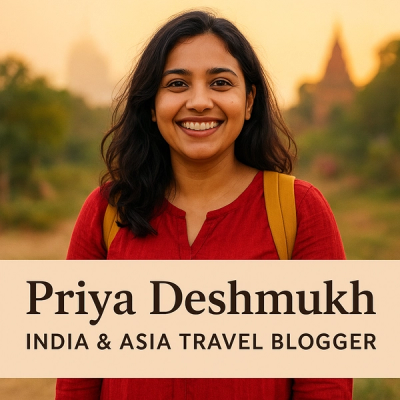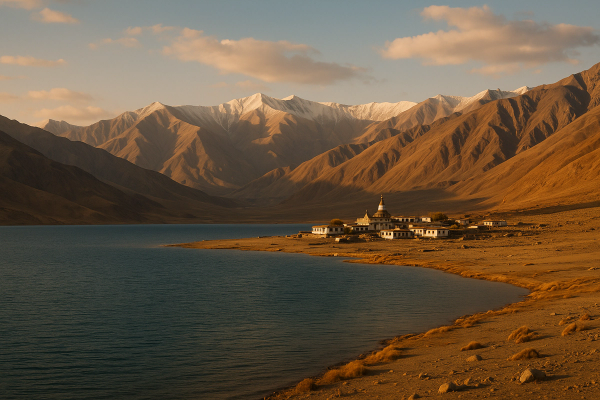Uttarakhand Wildlife & Nature Trails: Where to Go in 2026 (from a very desi lens)#
So, here’s the thing — I’m putting this together in a proper first‑person, chai-table voice. It’s stitched from on-ground notes, chats with forest guides, homestay folks, and a silly number of route maps. Treat it like the kind of tips you’d get from a friend who obsesses over hills and birds. Not every road will be the same when you go, not every langur will pose for your camera, and that’s okay. Uttarakhand’s forests don’t perform on demand — they just are. Raw, moody, ridiculously beautiful.¶
Quick planning update for 2026 (important stuff, no fluff)#
Forest zones have tightened rules and it’s good, actually. Most protected areas are cashless-friendly now, UPI works in many gates but carry small cash in the hills, just in case. As of late 2025, online safari bookings for Corbett and Rajaji are more streamlined, but peak windows still sell out fast. Monsoon landslides are a real thing from July to early Sept — watch state disaster and weather advisories before you push off. Drones are basically a no, unless you have explicit written permission. Plastic? Strictly banned inside sanctuaries. And during Char Dham rush (Apr–Jun and then Sept–Oct), traffic can test your patience, so buffer time is your bestie. Okay, let’s get to the forests.¶
Where to go in 2026: my go-to trail mix#
Jim Corbett Tiger Reserve (Ramnagar and beyond)#
Corbett is not just tigers; it’s the whole sal forest mood. Think frost-tipped grasslands in winter, birds going nuts at dawn, elephants drifting like shadows. Core tourism zones open mid‑Oct to mid‑Jun (Dhikala, Bijrani, etc.). Jhirna and Dhela often stay open year-round, weather permitting. Best sightings and crisp light: Nov–Apr. Safari costs are usually in the ₹3,500–6,000 per jeep range per ride (plus permits and guide fee). Book early on the official portal for core zones, especially Dhikala. Stay options run from forest rest houses (basic, magical if you like silence) to eco-lodges in Marchula/Mohan (₹4,000–12,000+). Pro tip: if you only get buffer zones, don’t sulk — buffers can surprise you big time, especially near riverine patches.¶
Rajaji Tiger Reserve (Haridwar–Rishikesh belt)#
A classic elephant landscape. The Chilla range near Haridwar feels blessed when the Ganga glints at sunset and peacocks shout for no reason. Rajaji generally opens mid‑Nov to mid‑Jun. Safaris are shorter and cheaper compared to Corbett (₹2,500–4,000 per jeep approx), and birding is lovely in winter — hornbills, owls, the works. If you’re doing a Rishikesh weekend, squeeze in a morning safari and an evening aarti. Avoid walking alone in forest fringes after dark; not everything with stripes wants a selfie.¶
Binsar Wildlife Sanctuary + Kasar Devi ridge (Almora side, Kumaon)#
If you like oak–rhododendron forests and long, slow mornings, Binsar hits different. Zero Point view is iconic — Trishul–Nanda Devi–Panchachuli line-ups on a clear day, like the hills decided to flex. Entry fees at the gate apply (carry ID), and the sanctuary stays open year-round. Best months: Oct–Mar for views, Mar–Apr for rhodo bloom, Dec–Jan for hush and maybe frost. Stay at KMVN Binsar (old-school charm) or homestays around Kasar Devi (₹1,200–5,000+). Birders: keep ears open for laughingthrushes, woodpeckers, and that sudden silence that means a predator may be near. Don’t panic, just… be present.¶
Sattal & Pangot (Nainital’s bird-nerd cousins)#
These two are birding heaven with less drama than Nainital. Sattal’s lakes are misty in the morning, and Pangot’s ridges can gift you cheer pheasants if you start early and get lucky. Ideal months: Nov–Mar for winter migrants and Mar–May for breeding activity. Day guiding typically ₹2,000–3,500 depending on hours and group size. Stays range ₹1,500–6,000 — look for simple lodges that know birds and respect trails. Tip: switch off auto ISO; the pretty shade gullies can wreck your shots if you’re not paying attention.¶
Valley of Flowers & Hemkund Sahib (Chamoli)#
This is your monsoon magic. The park opens June to October, with peak bloom usually mid‑July to mid‑Aug (depends on rains). Base is Govindghat; you trek or take shared transport to Pulna and then it’s 13 km to Ghangaria. From there, Valley gate opens early morning and entry closes around 2 pm; return by evening. Hemkund is a steep climb from Ghangaria, but the lake feels unreal on a clear day. Budget rooms in Ghangaria: ₹1,000–2,500, food is simple (rajma-chawal saves lives). Pack rain gear and avoid plastic. No camping inside the Valley, no loud music — it’s a sanctuary, not a picnic spot.¶
Chopta–Tungnath–Chandrashila + Deoriatal (Rudraprayag)#
For forest meets alpine sensation in one swipe, this circuit is perfect. Deoriatal trek is short and storybook, good for families. Tungnath is the highest Shiva temple, and Chandrashila ridge gives a 360 that will shut you up for a bit. Good time: Oct–Dec (crisp, cold) and Mar–Apr (rhodo bloom, sweet light). Jan–Feb can be deep snow, which is fun till it’s not — check trail conditions. Homestays and camps around Sari/Chopta range ₹1,000–3,500. Birders come for monal and laughingthrushes; morning starts before sunrise are worth it, promise.¶
Govind Pashu Vihar (Sankri side: Har‑ki‑Dun, Ruinsara, Kedarkantha)#
Community vibes here are strong. From the Sankri gateway you’ve got classic treks: Har‑ki‑Dun–Ruinsara (green valleys, old wooden homes, snow peaks sneaking up on you), and winter-fav Kedarkantha. Permits are checked at the base; local guides and porters keep things smooth and safe. Ideal season: Oct–Nov and Mar–May. Winter treks need proper layering and judgement — whiteout isn’t a joke. Stays in Sankri ₹800–2,000; trekking logistics vary widely, but a conservative backpacking plan for 4–6 days can run ₹7,000–15,000 depending on group size and gear. Food’s hearty: mandua rotis, rajma, chai, repeat.¶
Logistics, seasons, money: the unsexy bits that make your trip work#
Getting in: For Garhwal, fly to Dehradun (Jolly Grant) or take trains to Haridwar/Dehradun/Rishikesh. For Kumaon, Kathgodam and Ramnagar are your best railheads; Pantnagar airport is closer for Nainital–Corbett side. From there, shared jeeps and state buses are the real MVPs if you’re on budget. Taxi day rates hover around ₹3,500–6,000 for a small car depending on terrain and season; per‑km billing usually ₹12–18, but hills add a thoda premium. Stays: budget homestays ₹1,000–2,500, mid-range lodges ₹3,000–6,000, polished eco-lodges ₹7,000–12,000+. Forest Rest Houses are cheaper (₹1,500–3,500) but book via official sites and expect, you know, old taps and epic stars. Food: Kumaoni and Garhwali thalis — bhatt ki churkani, kafuli, chainsoo, aloo ke gutke, bhang ki chutney — please try. Buransh (rhododendron) juice is everywhere in spring. In Almora side, pick up bal mithai and singori. Seasons: Oct–Nov bring immaculate skies and birds warming up; Dec–Feb is great for wildlife and silence if you can handle cold; Mar–Apr bloom time feels like Holi for trees; May–Jun is warm but good for grassland sightings; Jul–Aug is monsoon — Valley of Flowers is peak, but landslides happen. Safety: no night driving in landslide-prone stretches, keep power banks, avoid feeding monkeys, and do not wander into forest edges after dark because… well, the forest isn’t a theme park. Budget thumb-rule for a week ex‑Delhi with shared taxis, homestays, one premium safari: ₹18,000–30,000 per person. You can spend less with buses and dhabas, or triple it with luxe lodges, up to you.¶
A simple 7‑day nature loop for 2026 (easy pace, big payoff)#
Day 1: Delhi/Dehradun to Rajaji (Chilla range). Evening safari, chill by the river. Day 2: Early safari, then push to Chopta via Rishikesh–Rudraprayag. Day 3: Dawn hike Tungnath–Chandrashila or Deoriatal if you want softer. Drive to Auli/Joshimath or stay another night in Chopta if knees are grumpy. Day 4: Across to Almora side; plant yourself at Kasar Devi for a slow evening. Day 5: Binsar sunrise at Zero Point, lazy forest walk, drive to Sattal by late afternoon. Day 6: Birding in Sattal or a quick hop to Pangot. If your gang is wildlife-first, swap this for Ramnagar. Day 7: Jim Corbett morning safari and back to Delhi by night. Tweak this based on permits — if you score Dhikala, lock it in and orbit everything else around that. Also, btw, always keep a buffer day in the hills — landslides, power cuts, and magical detours don’t care about your spreadsheet.¶
Munsiyari & the Johar valley (bonus if you have extra days)#
If you’ve got two more days, Munsiyari will steal your heart and not apologise. Panchachuli views, Khaliya Top meadows, and night skies that look hand‑painted. Great Oct–Dec for clear peaks, Mar–Apr for bloom. Homestays ₹1,200–3,000. Trails here need respect; weather flips fast, and mobile networks play hide and seek. Keep it slow, talk to locals, eat whatever the kitchen is cooking — usually the best call.¶
Final thoughts (and a tiny rant)#
Here’s my not-so-hot take: pick fewer places, stay longer, and let the forest set the pace. Don’t blast music from cars, don’t litter, don’t chase animals for reels. You’ll see more by moving less — and honestly, you’ll feel the mountains more too. Uttarakhand in 2026 isn’t about ticking off ‘spots’; it’s about quiet trails, respectful travel, and those small moments… hot chai after a windy ridge, a whistling thrush being a show-off near a stream, somebody’s grandma slipping you an extra roti because you looked hungry. If you want more field-style guides and very real trip notes, I keep sharing them on AllBlogs.in — drop by and say hi.¶














